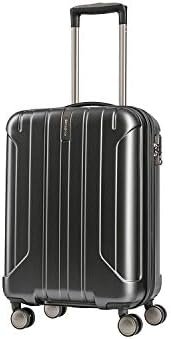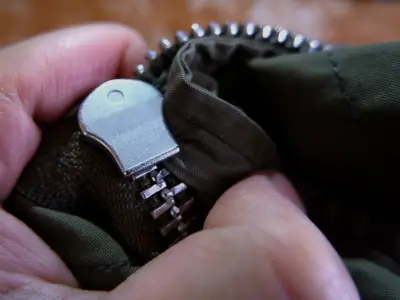Polypropylene and polycarbonate are two widely used materials in the manufacturing of luggage, including suitcases and bags. Each material possesses unique characteristics that make it suitable for different types of travelers and various needs. In this article, we will compare the advantages, drawbacks, and applications of polycarbonate and polypropylene. We will also explore common features such as price range, durability, and available luggage options for each material
When it comes to choosing the right luggage, material plays a crucial role in determining its durability, weight, and overall performance. Polycarbonate and polypropylene have gained popularity in the luggage industry due to their unique properties. Let’s delve deeper into each material and understand their respective advantages and disadvantages.
RELATED: Polycarbonate Vs. ABS Luggage Which Is The Right Choice
What Is Polycarbonate?
Polycarbonate is a tough, transparent, lightweight, and highly durable plastic material. It is widely used in various industries, including automotive, electronics, and construction. When used in luggage, polycarbonate offers several benefits.
RELATED: 9 Best Lightweight Luggage For Seniors Or Elderly | 2023
Advantages of Polycarbonate material luggage
Polycarbonate luggage is renowned for its ability to withstand heavy impacts. It is designed to handle rough handling during transit, ensuring your belongings remain protected.
Despite its durability, polycarbonate is lightweight as compared to aluminum, allowing travelers to pack more without exceeding weight limits. It also absorbs shocks effectively, reducing the risk of dents or scratches.
Polycarbonate luggage provides a sleek and modern appearance. Its flexibility allows for expansion while maintaining a compact shape, providing travelers with ample packing space.
Disadvantages of Polycarbonate luggage
Over time, polycarbonate luggage may develop scratches and lose its initial shine. However, this does not affect its overall durability or functionality.
Polycarbonate luggage tends to be more expensive than luggage made from alternative materials. This can be a deterrent for budget-conscious travelers.
The rigid structure of polycarbonate luggage can pose challenges when packing it into tight spaces. It may require more effort to fit into overhead compartments or under seats.
Polycarbonate is a good conductor of heat. If left exposed to the sun for extended periods, the luggage can become hot to the touch, potentially causing discomfort during summer travel.
What is Polypropylene?
Polypropylene is a versatile plastic that is widely used in a variety of applications. It is a thermoplastic polymer that is known for its excellent chemical resistance, high stiffness, and low-cost production.
Polypropylene is commonly used in packaging materials, reusable containers, and consumer goods. It is also used in the automotive industry, where it is used in components such as dashboards and instrument panels.
Advantages of Polypropylene material luggage
Polypropylene material luggage offers a variety of benefits that make it a popular choice among frequent travelers.
One of the key advantages is its durability, which withstands the wear and tear of travel. This material can stand in extreme temperatures.
Additionally, Polypropylene is lightweight, making it easy to maneuver through crowded airports and onto airplanes. Travelers need not worry about excess weight charges due to the material’s lightweight.
It’s also water-resistant, ensuring that your belongings remain dry even in wet conditions.
Finally, Polypropylene is relatively affordable in terms of luggage materials, providing a combination of durability, lightweight, and water-resistant features at a great value.
Overall, Polypropylene is an ideal material for travelers looking for optimum convenience and protection for their belongings, without breaking the bank.
Disadvantages of Polypropylene Material Luggage
Polypropylene isn’t available in large sizes, so it may not be suitable for those looking for bigger suitcases.
Some polypropylene bags are considered to be unfashionable and outdated when compared to more modern options.
While polypropylene is resistant to water and other liquids, it may not be suitable for extreme conditions such as snow or intense heat.
Not Very Flexible – Polypropylene is a rigid material, so it doesn’t offer much flexibility, whenever it is exposed to an impact, it is breakable or may crack.
Comparison Table:
If you want to quickly check the properties of both materials here you go!
| Features To Consider | Polycarbonate | Polypropylene |
|---|---|---|
| Durability and impact resistance | Excellent durability and impact resistance. | Resistant to wear and tear, Less durable than polycarbonate. |
| Weight and maneuverability | It is also prone to scratches. | Lightest material for luggage manufacturing. |
| Cost and affordability | Typically more expensive than polypropylene luggage. | Relatively affordable and offers value for money. |
| Scratch resistance and appearance | Prone to scratches and loss of shine over time. | It also prone to scratches. |
| Packing convenience and flexibility | Flexible design allows for expansion. | Limited flexibility, but the rigid structure can pose challenges in tight spaces. |
| Water resistance and protection | Generally water-resistant, keeps belongings dry. | Inherent water resistance protects belongings from moisture. |
| Heat Resistance | Higher heat resistance. | High heat resistance but low UV resistance. |
Comparison between Polycarbonate vs. polypropylene
If you’re in the market for new luggage, you’re likely considering factors such as durability and weight. Two popular materials in luggage construction are polypropylene, polycarbonate and ABS.
Polycarbonate is known for its impact resistance and flexibility, making it a great choice for frequent travelers who want a durable suitcase.
On the other hand, polypropylene is a lightweight material that is also known for its resilience and strength. It offers great protection for your belongings while being easy to carry around.
When comparing polycarbonate and polypropylene luggage, it ultimately comes down to your specific needs and preferences.
If you prioritize durability and flexibility, polycarbonate might be your best choice.
If you value lightweight luggage that can still withstand heavy use, polypropylene would be a better option.
Conclusion
In the comparison of polycarbonate vs. polypropylene luggage, both materials offer distinct advantages and disadvantages. Polycarbonate excels in durability, lightweight construction, and shock absorption. It is suitable for travelers seeking sleek and reliable luggage but may require extra care to maintain its appearance.
On the other hand, polypropylene provides excellent durability, affordability, and water resistance. It is a practical choice for travelers looking for lightweight luggage that can withstand wear and tear. Consider your priorities, travel style, and budget when making your final decision.
FAQs:
What is the best material for luggage for international travel?
When it comes to choosing the best material for luggage for international travel, there are a few factors to consider. Firstly, durability is key. Secondly, weight is crucial. Many airlines have strict regulations on luggage weight, and you don’t want to be stuck paying extra fees.
Lastly, ease of transportation is important. Based on these factors, materials such as polycarbonate or aluminum are often recommended for their durability and lightweight properties.
What is the best material for checked luggage?
Polycarbonate is the best material for checked luggage as it can bear the impact during transit, and due to its flexibility, it can hold more items.
Are polycarbonate and polypropylene the same?
Polycarbonate and polypropylene are two distinct thermoplastic materials, despite their similar-sounding names. While they share some properties, such as being lightweight and durable, they differ in several ways. For instance, polycarbonate is more impact-resistant and transparent.
Polypropylene, on the other hand, is stiffer and more rigid, which makes it an ideal material for products that require structural strength
Is Samsonite polycarbonate?
Yes, Samsonite indeed uses polycarbonate material in some of their luggage lines. Polycarbonate is a type of thermoplastic polymer that is known for its durability, lightweight, and resistance to impact. It has become a popular choice for luggage manufacturers as it offers protection for the contents without adding too much weight to the luggage itself.
Does polycarbonate crack luggage?
Polycarbonate is a material that has become increasingly popular in the manufacturing of luggage due to its durability and resistance to impact. However, there have been concerns among travelers regarding its tendency to crack under pressure. While the overall strength and resilience of polycarbonate luggage is of high quality, the material is not indestructible.
There are various factors that can contribute to its cracking, such as incorrect handling, insufficient packing, and extreme temperatures.
Is polypropylene cheaper than polycarbonate?
When determining which is cheaper polypropylene and polycarbonate, it is important to consider various factors. Although polycarbonate is more expensive than polypropylene, it has higher impact resistance and is more durable.
References:
“Polycarbonate vs. Polypropylene: Which is Better for Luggage?” Luggage Council. https://luggagecouncil.com/polycarbonate-vs-polypropylene-which-is-better-for-luggage/
**”Polycarbonate (PC)” DSM Engineering Materials. https://www.dsm.com/markets/engineering-materials/en/products/polycarbonate.html
“Polypropylene (PP)” Polymer Solutions. https://www.polymersolutions.com/blog/polypropylene-pp/
**https://expertworldtravel.com/polypropylene-vs-polycarbonate-luggage/





7 Comments on “Polypropylene VS Polycarbonate Luggage: Which Is a Good Choice?”